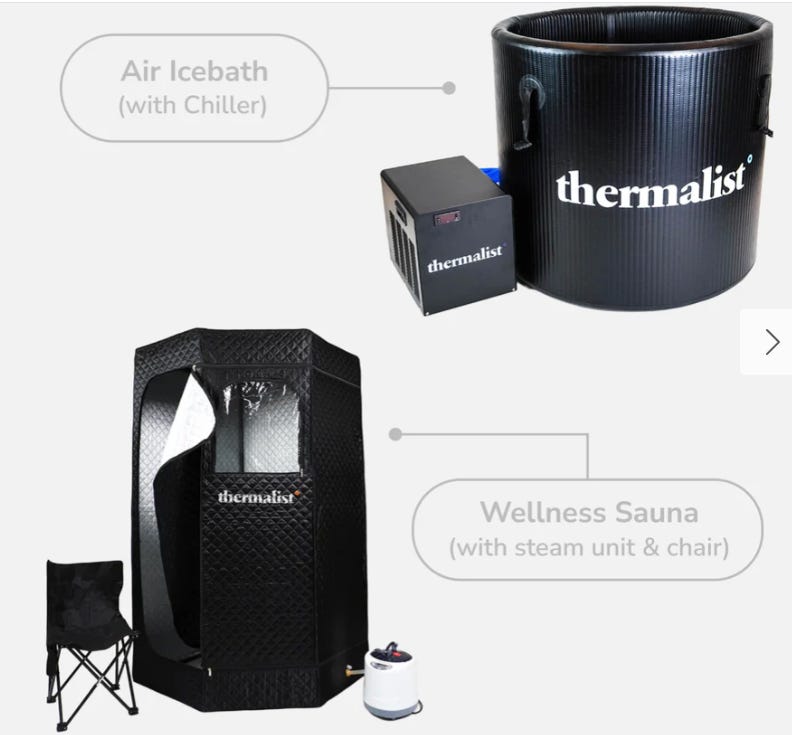Estrogen, Mitochondria, and Metabolic Flow: What Every Woman Should Know
20% OFF + FREE Course
INTRODUCTION
If you’ve ever wondered why your energy shifted after 40—or why your body doesn't respond to fasting or exercise the way it used to—the answer might lie deep in your cells. Specifically, in the dance between estrogen and mitochondria.
In my last article, we explored metabolic flux—how your cells continuously process energy from carbohydrates and fats to keep you going. But this cellular rhythm doesn’t happen in isolation. It's finely tuned by hormones, and for women, estrogen plays a starring role.
Let’s dive into what science has uncovered about estrogen’s role in energy metabolism—and why this matters more than ever for women in perimenopause and beyond.
WHAT IS ESTROGEN DOING IN YOUR CELLS?
Estrogen is not just a reproductive hormone. It’s a metabolic power player. It interacts with nearly every tissue in the body—including muscle, fat, brain, and liver—but one of its most underappreciated roles is inside the mitochondria, the “power plants” of our cells.
Inside mitochondria, estrogen binds to receptors like ERα (estrogen receptor alpha) and ERβ, influencing how we burn fat, produce ATP (energy), and handle oxidative stress.
Study example:
A 2017 study published in Frontiers in Endocrinology found that estrogen increases mitochondrial respiration and improves oxidative capacity in female muscle cells compared to males. This helps explain why premenopausal women tend to have better metabolic flexibility and fat oxidation during endurance activity (Vina et al., 2017).
20% off on ALL Thermalist at home products
Choose a bundle: Chiller + Icebath + Sauna tent
FREE Online course
USE CODE: BESTLIFE
We ship in Europe.
METABOLIC FLUX & ESTROGEN DECLINE: WHAT CHANGES?
As estrogen levels fall during perimenopause and menopause, several changes in cellular metabolism can occur:
🔻 Reduced glucose uptake in muscle tissue
🔻 Lower fat oxidation at rest and during exercise
🔻 Increased fat storage, especially around the abdomen
🔻 More mitochondrial stress and fatigue
This leads to lower metabolic flux—the flow of nutrients through energy pathways becomes sluggish. You may feel this as “brain fog,” slower recovery from workouts, or stubborn weight gain.
Study example:
Research in Cell Metabolism (Rogers et al., 2009) showed that estrogen deficiency in mice led to impaired mitochondrial function and decreased metabolic flux, particularly in skeletal muscle. When estrogen was replaced, these metabolic effects were reversed.
HOW CAN YOU SUPPORT METABOLIC FLUX WITHOUT ESTROGEN?
Even if you’re postmenopausal or navigating perimenopause, there’s good news. Lifestyle interventions can improve metabolic flow—even in the absence of estrogen.
✅ Cold and heat exposure (contrast therapy):
Cold plunging stimulates mitochondrial biogenesis and fat oxidation via PGC-1α, while heat exposure (like sauna) improves insulin sensitivity and glucose uptake. These interventions work synergistically to support flux.
✅ Strength training & zone 2 cardio:
Both increase mitochondrial density and enhance substrate switching—mimicking the metabolic effects of estrogen.
✅ Nutritional timing:
Avoid chronic underfeeding or overfasting. In midlife women, cyclic fasting or fed-state cold exposure may support better energy and hormone regulation.
✅ Targeted nutrients:
Omega-3s, B vitamins, and polyphenols (like those in blueberries and green tea) can reduce mitochondrial stress and aid energy processing.
FINAL THOUGHTS
Metabolic flux isn’t just about what you eat. It’s also about how your body uses fuel—and what influences that process. For women, estrogen is one of the most powerful metabolic regulators.
Understanding its cellular role—and how to support your body as estrogen declines—is a path to energy, clarity, and metabolic resilience at every stage of life.
REFERENCES
Vina, J. et al. (2017). “Females Live Longer than Males: Role of Mitochondrial Oxidative Stress.” Frontiers in Endocrinology.
Rogers, N. H. et al. (2009). “Estradiol promotes mitochondrial function through estrogen receptor beta in skeletal muscle.” Cell Metabolism.
Mauvais-Jarvis, F. (2018). “Estrogen and androgen receptors: Regulators of fuel homeostasis and emerging targets for diabetes and obesity.” Trends in Endocrinology & Metabolism.




